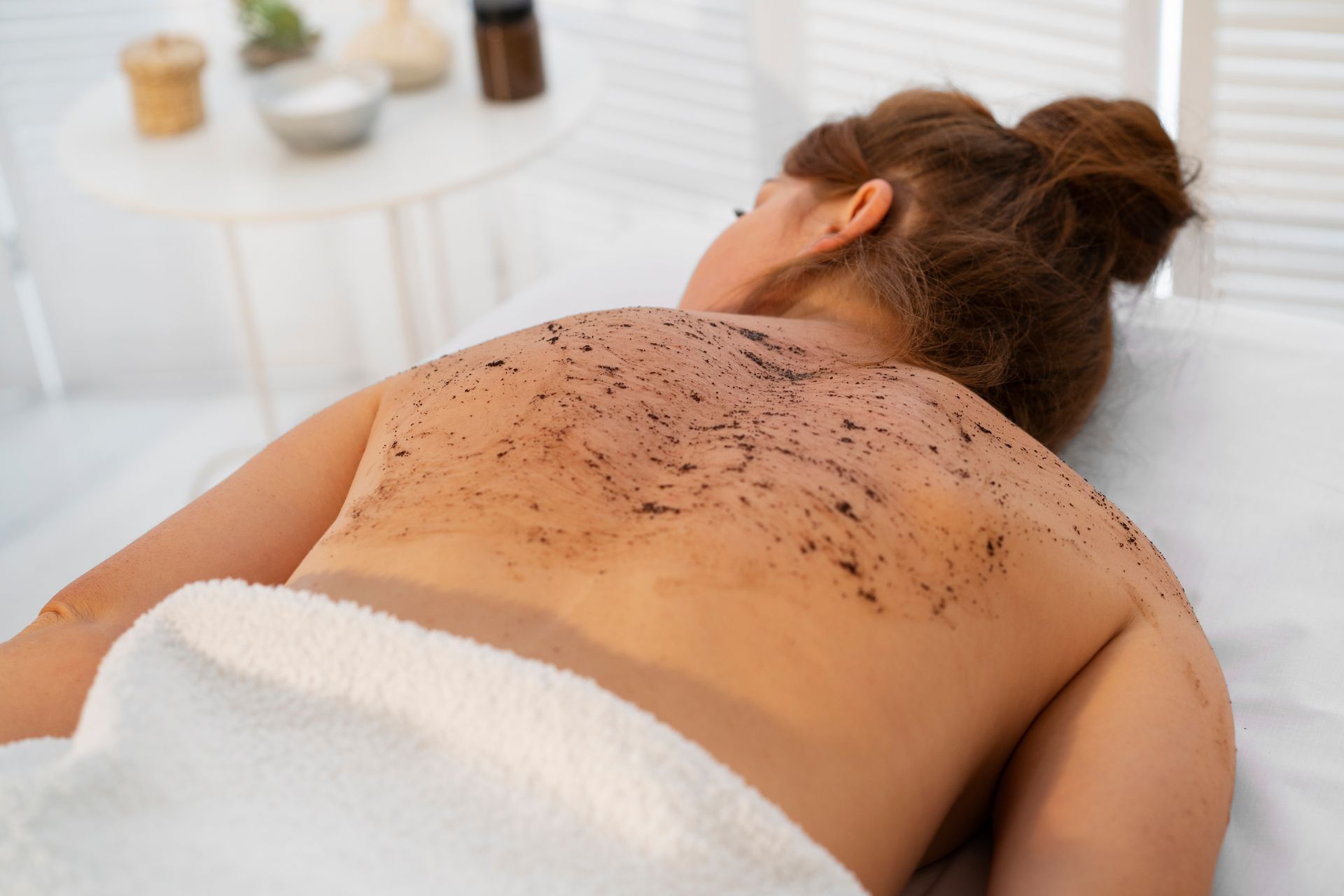Laser Hair Removal vs Shaving: Which One Is Better?
In the grand arena of grooming, where silky-smooth skin reigns supreme, two contenders step into the ring: Laser Hair Removal and Shaving. It's a timeless battle, a relentless struggle between the cutting-edge precision of technology and the age-old art of wielding a blade. As we stand on the cusp of choice, the dilemma looms large: Which path shall we tread in pursuit of that perfect, hair-free canvas?
For generations, humans have sought methods to
eliminate unwanted hair, seeking that elusive state of flawlessness. Laser Hair Removal, with its promises of lasting liberation from the tyranny of daily shaving, stands as the modern champion. Meanwhile, Shaving, a tried-and-true technique passed down through the ages, continues to offer its swift and familiar embrace.
The question persists, echoing through the corridors of our bathrooms and salons: which one is truly better, and which will emerge victorious in the battle for your grooming affections? We dissect the pros, cons, and nuances of Laser Hair Removal and Shaving, helping you make an informed choice that aligns with your preferences and goals. It's time to get started towards the smooth skin you desire, armed with knowledge and confidence.
A Brief Explanation of Laser Hair Removal
Laser Hair Removal is a popular technique for reducing hair for long periods of time. It's a bit like magic, but with science behind it. In laser hair removal, concentrated beams of light are used to remove unwanted hair. It's like precision hair pruning. A trained technician uses a specialized device that emits a laser (which stands for "Light Amplification by Stimulated Emission of Radiation") to target and damage hair follicles, the tiny structures in your skin where hair grows from. The goal is to reduce hair growth in the treated area.
It resides in the pigment (color) in your hair, typically melanin. When the laser detects the hair follicle, it releases energy in the form of heat. This heat damages the follicle, slowing down or preventing hair growth. Importantly, it does this without harming the surrounding skin, thanks to the precision of the laser.
Laser Hair Removal comes with some exciting advantages:
- Unlike shaving, where hair grows back quickly, Laser Hair Removal can provide smooth skin for an extended period. Some people enjoy hair-free periods that last for months or even years.
- The laser can be aimed precisely at specific areas. This means you can remove hair from specific spots without affecting the surrounding skin.
- One of the annoying side effects of shaving is ingrown hairs. Laser Hair Removal helps reduce the likelihood of these, as it targets the follicle directly.
Laser Hair Removal isn't without its drawbacks:
- Laser Hair Removal tends to be more expensive than buying a razor. It usually requires multiple sessions, and each session can add to the cost.
- Laser Hair Removal doesn't work in a single go. Hair grows in cycles, and the laser can only effectively target hair during its active growth phase. You'll need several sessions over weeks or months to catch all the hair.
- While most people don't experience severe side effects, some may encounter redness, swelling, or temporary skin changes after treatment. It's crucial to consult with a professional and understand the potential risks before starting.
Exploring the Shaving Option
Shaving is a classic and straightforward way to remove unwanted hair. Shaving is a hair removal method that involves using a razor or a similar tool to cut hair from the surface of the skin. It's a technique that humans have been using for centuries to achieve smooth skin. Shaving is pretty intuitive. When you run a sharp blade (like a razor) over your skin, it slices off the visible part of the hair. This doesn't affect the hair follicle beneath your skin's surface, so the hair will grow back relatively quickly.
Shaving has its own set of advantages:
- Shaving is a speedy process. You can do it in the comfort of your own home whenever you like, without the need for special appointments or equipment.
- Compared to some other hair removal methods, like laser or waxing, shaving is budget-friendly. Razors and shaving cream are readily available and won't break the bank.
- Shaving is generally painless. It doesn't involve any pulling or heat, making it a comfortable choice for many people.
However, there are downsides to consider:
- Shaving offers short-lived results. Your smooth skin won't last long, as the hair grows back within a few days to a week, depending on your hair's growth rate.
- Some folks experience ingrown hairs (hairs that curl back into the skin) and razor burn (skin irritation) after shaving. These can be uncomfortable and unsightly.
- Since shaving is a temporary solution, you'll need to shave regularly to maintain your desired level of smoothness. This can be a bit of a hassle and may lead to skin irritation if done too frequently.
Shaving is a quick, cost-effective, and pain-free way to remove unwanted hair. It's convenient for touch-ups or when you're in a hurry. However, it comes with the drawback of short-lived results, potential skin issues like ingrown hairs and razor burn, and the need for frequent maintenance to keep your skin smooth. Make sure to weigh these pros and cons when deciding if shaving is the right hair removal method for you.
Comparing the Two Methods
Now that we've explored the specifics of laser hair removal and shaving, let's pit them against each other in several key aspects to help you decide which method suits you best.
Effectiveness: Laser Hair Removal vs. Shaving
Laser Hair Removal is highly effective in reducing hair growth, providing long-lasting results, and offering precision targeting for thorough and even hair removal. In contrast, shaving, while effective in the short term, leads to relatively quick regrowth and demands frequent maintenance since it merely cuts hair at the surface without affecting follicles, making it less effective in preventing ingrown hairs compared to laser hair removal.
Cost: Laser Hair Removal vs. Shaving
Laser Hair Removal typically involves a higher upfront cost and an investment in multiple sessions; however, it can lead to long-term cost savings as you'll reduce the need for frequent purchases of razors and shaving products. In contrast, shaving begins with a low initial cost as razors and shaving cream are affordable, but over time, the ongoing expense accumulates due to the frequent replacement of razors and shaving supplies.
Pain and Discomfort: Laser Hair Removal vs. Shaving
Laser Hair Removal is generally well-tolerated, causing only mild discomfort, often compared to a rubber band snap, with potential for temporary redness and slight swelling post-sessions. It's considered less painful than some alternative hair removal methods like waxing. Shaving, on the other hand, is virtually pain-free during the process but carries a risk of nicks, cuts, or razor burn if not done carefully, and individuals with sensitive skin may experience irritation.
Time and Convenience: Laser Hair Removal vs. Shaving
Laser Hair Removal involves multiple sessions spaced weeks apart, with each session varying in duration depending on the treatment area. While it demands a time commitment, it offers the convenience of long-lasting results, reducing the need for frequent grooming. On the other hand, shaving is quick and can be done at home according to your schedule, making it ideal for last-minute touch-ups, but it necessitates repetition every few days to a week, depending on hair growth, making it less time-efficient in the long run.
Suitability for Different Skin Types
Laser hair removal is more effective on individuals with fair skin and dark hair because the laser targets pigment, but newer technology can extend its suitability to a broader range of skin and hair types. In contrast, shaving is universally suitable for all skin types and hair colors.
Sustainability and Environmental Impact
Laser hair removal is generally considered more sustainable in the long term because it reduces the need for disposable shaving products. However, it's worth noting that the energy consumption of the laser equipment and the disposal of equipment components may have environmental implications. On the other hand, shaving produces waste in the form of disposable razors and packaging, and if razors are not properly disposed of, they can contribute to plastic waste, making it less environmentally friendly in terms of waste generation.
In making your decision between laser hair removal and shaving, consider your priorities regarding effectiveness, cost, pain, convenience, and environmental impact. Your choice should align with your preferences, lifestyle, and skin type, ultimately leading to a grooming routine that suits you best.
Which One Should You Choose?
When it comes to the choice between laser hair removal and shaving, your decision should be based on several factors. Let's explore what you should consider before making your choice, who each method is suitable for, and how you can combine them for the best results.
Who Is It Suitable For Laser Hair Removal?
People with fair skin and dark hair often experience the best results in laser hair removal since the laser targets pigment. Nevertheless, newer technology extends its suitability to a broader range of skin and hair types, making it more inclusive. This method is ideal for individuals willing to commit to multiple sessions spaced over time to achieve lasting hair reduction. Moreover, those who can afford the initial cost and appreciate the long-term cost savings find it advantageous. Also, laser hair removal is an excellent choice for people seeking to minimize the pain and discomfort often associated with alternative hair removal methods like waxing.
Who Is It Suitable For Shaving?
Shaving is universally suitable for all skin types and hair colors, making it an affordable and readily available method without the need for expensive equipment or appointments. It's an ideal choice for individuals who need a quick and convenient solution for hair removal, especially on short notice. Moreover, for those who don't mind frequent maintenance and are comfortable with the temporary nature of shaving results, it offers a hassle-free grooming option.
Combining Both Methods
Sometimes, the best approach is a combination of both methods: begin with initial Laser Hair Removal to significantly reduce hair growth and enjoy long-lasting smoothness, then use shaving for touch-ups between laser sessions or for areas where you prefer a quick solution, allowing you to customize your hair removal routine to your specific needs, such as using Laser Hair Removal for larger areas and shaving for smaller, more manageable ones.
Ultimately, the choice between Laser Hair Removal and Shaving depends on your individual preferences, lifestyle, and priorities. By considering these factors and understanding who each method is suitable for, you can make an informed decision that aligns with your goals for achieving smooth, hair-free skin.
Conclusion
In the end, there is no one-size-fits-all answer to the Laser Hair Removal vs. Shaving debate. It's a highly personal decision, and your unique circumstances, preferences, and priorities should lead the way. Armed with the knowledge of both methods and an understanding of what matters most to you, you can confidently stride towards your goal of achieving smooth, hair-free skin, embracing a grooming routine that suits you perfectly.
Ultimately, the choice between Laser Hair Removal and Shaving is about aligning your decision with your needs and lifestyle. Whether you prioritize long-lasting smoothness, quick fixes, or affordability, your grooming method should enhance your confidence and comfort. It's a personal choice that revolves around what makes you feel your best, so choose wisely, and embrace the path to achieving the smooth, hair-free skin that suits you perfectly.
BOOK YOUR FREE SESSION










